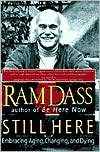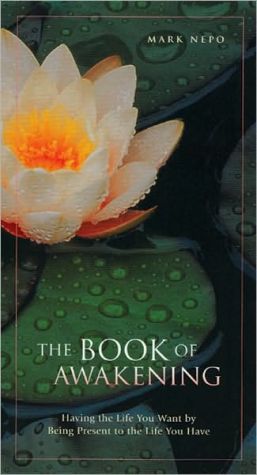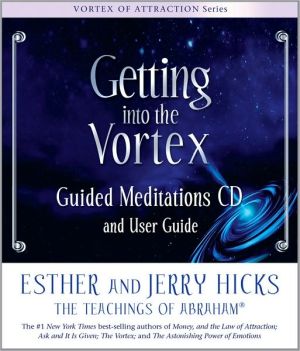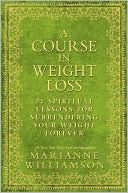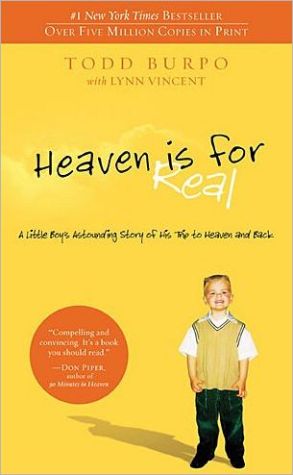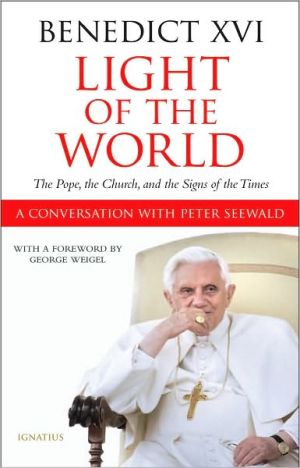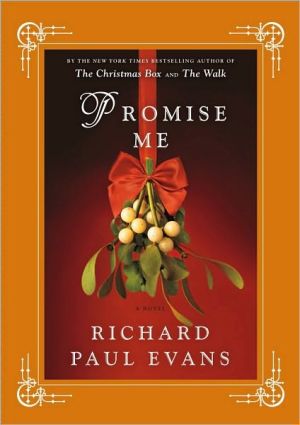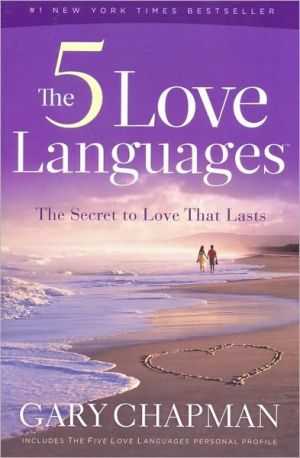Still Here: Embracing Aging, Changing and Dying
More than thirty years ago, an entire generation sought a new way of life, looking for fulfillment and meaning in a way no one had before. Leaving his teaching job at Harvard, Ram Dass embodied the role of spiritual seeker, showing others how to find peace within themselves in one of the greatest spiritual classics of the twentieth century, the two-million-copy bestseller Be Here Now. As many of that generation enter the autumn of their years, the big questions of peace and of purpose have...
Search in google:
More than thirty years ago, an entire generation sought a new way of life, looked for fulfillment and meaning in a way no one had before. This was the Woodstock generation, and they were led on their quest by one man, the man who was "there" before everyone else: Ram Dass. He changed the way we thought about life; he left his teaching post at Harvard to embody the role of spiritual seeker; he showed us all how to begin to find peace within ourselves, in one of the greatest spiritual classics of this century, the two-million-copy bestseller Be Here Now. Ram Dass went on to lecture around the world, to create organizations, and to dedicate himself to serving others. A few of his readers followed him, but most went into business, had children, built houses, and set the larger questions of meaning and fulfillment aside. Now we find we again need Ram Dass. As we enter the later stages of life, the big questions of peace and of purpose have returned, this time demanding answers, and our old friend Ram Dass has also returned to offer a helping hand. He again blazes a new trail, inviting us to join him on the next stage of the journey. This part has been particularly difficult for him: as he was finishing a draft of the manuscript, he was stopped in his tracks by a massive cerebral hemorrhage that he was not expected to survive. But survive it he did, with his humor intact and a bigger heart than ever. In Still Here, Ram Dass helps us explore the joy, pain, and opportunities of the ripening seasons of our lives. Writing with his trademark humor and wisdom, sharing stories from his own life, and meditation exercises to integrate the teachings into daily life, Ram Dass offers us a new perspective on the territory that lies ahead. It is a perspective on aging, changing, and dying that he hopes will make the tumultuous process a little easier for all of us. (July/Aug. 2000) - Napra Review With simplicity and humor, one of the world's beloved elders offers profound wisdom on aging, encouraging us to live out our lives with grace, fully present to the end.
\ \ \ \ Preface\ \ \ Be Here Now was first published in 1971. It recorded the two major experiences I had had during the Sixties: one of them was psilocyben mushrooms, and the other was my guru, Maharajji. Both of them-mushrooms and Maharajji-did many things for me, one of which was to give me a familiarity with other planes of consciousness. They showed me that there's much more in any given moment than we usually perceive, and that we ourselves are much more than we usually perceive. When you know that, part of you can stand outside the drama of your life.\ There were a number of transformations in Richard Alpert (my name at birth), which were inspired by mushrooms and Maharajji, and the best, I think, is the one that opened my heart and gave me a chance to serve. For me, the way the compassion seemed to express itself was through showing people what I had done, how I had approached my experiences, and so opening avenues for them where their own spirit could emerge. I felt incredibly fortunate because of all the things that had happened to me in the Sixties, and I wanted to spread the grace around. So there were lectures, there were books, there were tapes, and there were videos-a patchwork of different means for sharing my life with people. Gandhi once said, "My life is my message." That's what I aspire to.\ As I opened my heart, various forms of suffering in my fellow human beings presented themselves, and I decided to do what I could to help. Prisoners read Be Here Now, and then wrote to me, and through corresponding with them I realized that many people can do deep spiritualwork in prison. So I started the Prison Ashram Project.\ Then I noticed how frightened we are of death in our culture, and what a lot of suffering that was creating. That was in contrast to what I'd seen in India, which has a much different understanding of death than we do because of their knowledge of the continuation of the soul. I wanted to find ways of sharing that, so I instituted the Dying Project. I started hanging out with people who were dying-including my mother, my father, my stepmother, people with AIDS and cancer, many, many people over the years, whom I've been with as they died. To each of these individuals and situations I brought what I had to share-my acquaintance with other planes of consciousness, and the way that affects how we perceive our living and our dying.\ I started to look at the social institutions in the world around me, to see whether the spiritual tack I was taking might be commensurate with social action. A couple of friends were starting the Seva Foundation, and invited me to join them to work with doctors and activists, doing work in India, Nepal, and Guatemala, and with American Indians and in the inner cities of America. Other friends had wondered how business, which is the institution which has the most power in our society, might become more informed by spiritual Awareness and started the Social Venture Network. They are compassionate businesspeople who invited me to work together with them. I joined the board of Creating Our Future, which was an organization for teenagers who wanted to inform their lives with spirit. These organizations were trying to prevent suffering in areas in which I felt a personal connection. For some people, it's world hunger, or literacy. For me it was seeking spiritual answers to many of our problems.\ My interest in aging came from a personal direction: I was getting older-and so were the baby boomers, who were fast approaching fifty. In this youth- oriented culture, aging is a profound source of suffering, and that is what I was responding to when I decided to turn my attention to conscious aging workshops, and to writing this book.\ One evening in February 1997, I was in bed at home in Marin Country, contemplating how to end this book. I'd been working on the manuscript for the past eighteen months, weaving together material from personal experience and from talks I'd given around the country on conscious aging, but somehow the book's conclusion had eluded me. Lying there in the dark, I wondered why what I'd written seemed so incomplete, not quite rounded, grounded, or whole. I tried to imagine what life would be like if I were very old-not an active person of sixty-five, traveling the world incessantly as a teacher and speaker, caught up in my public role-but as someone of ninety, say, with failing sight and failing limbs. I fantasized how that old man would think, how he'd move and speak and hear, what desires he might have as he slowly surveyed the world. I was trying to feel my way into oldness. I was thoroughly enjoying this fantasy when the phone rang. In the process of my fantasy, I'd noticed that my leg seemed to have fallen asleep. As I got up to answer the phone, my leg gave way under me and I fell to the floor. In my mind, the fall was still part of my "old-man fantasy." I didn't realize that my leg was no longer working because I'd had a stroke.\ I reached for my phone, on the table near my bed.\ "R. D.? Are you there?"\ I heard the voice of an old friend in Santa Fe. When I didn't respond coherently, he asked, "Are you sick?" I suppose I still didn't answer, so he said, "If you can't speak, tap on the phone. Tap once for yes and twice for no." When he asked whether I wanted help, I tapped "no" over and over again.\ Nonetheless, he contacted my secretaries, who live close by, and the next thing I knew they rushed into the house and found me on the floor. There I was flat on my back, still caught in my "dream" of the very old man, who had now fallen down because his leg wouldn't work. My assistants seemed very frightened; they called 911. My next recollection is of a group of young firemen, straight out of central casting, staring into the old man's face while I observed the whole thing as if from a doorway to the side. I'm told I was immediately rushed to a hospital nearby, but all I remember is being rolled down the hospital corridors, looking up at the ceiling pipes and the concerned faces of nurses and friends. I was fascinated by what was happening.\ Only afterward did I learn that I had a stroke and realize how close to death I had actually been. The doctors told my friends I had a massive cerebral hemorrhage, and only a ten percent chance of survival. I noticed the looks of deep concern on the faces of the doctors and my friends, but the thought of dying was nowhere in my mind, so I was perplexed by their grave expressions.\ Three hospitals and hundreds of hours of rehabilitation later, I gradually eased into my new post-stroke life as someone in a wheelchair, partially paralyzed, requiring round-the-clock care and a degree of personal attention that made me uncomfortable. All my life I had been a "helper"; I had even collaborated on a book called How Can I Help? I now found myself forced to accept the help of others, and to admit that my body needed attention. Because I'd spent my adult life concentrating on the realms of the spirit, I'd always been able to rationalize the distance I maintained from my body by saying that my detachment was a spiritual witnessing of the physical form. But that had been only partly true. The truth is that I distanced myself from my body. I saw my body as merely a vehicle for the soul. I ignored it as much as possible and tried to spiritualize it away.\ From a physical perspective, the lack of love I'd shown toward my body contributed to my stroke. I was negligent about taking my blood pressure medicine and, a month before the stroke, ignored an unusual one-side hearing loss while scuba diving in the Caribbean. Before the stroke, although I was in my 60's, I saw myself as young and powerful, with my MG, golf clubs, surfing, and speaking gigs. Illness had shattered my self-image, and opened the door to a new chapter in my life.\ After any major physical "insult," as they call it, it's all too easy to see yourself as a collection of symptoms rather than as a total human being, including your spirit-and thus to become your illness. Fear is powerful and contagious, and at first I allowed myself to catch it, worried that if I didn't do what the doctors ordered, I'd be sorry. But now I'm learning to take my healing into my own hands. Healing is not the same as curing, after all; healing does not mean going back to the way things were before, but rather allowing what is now to move us closer to God.\ For example, since my speech was severely impaired by this stroke, I considered not speaking publicly anymore, since the words came so slowly, but people insisted that my halting new voice enabled them to concentrate on the silence between the words. Now that I speak more slowly, people tend to finish my sentences for me, and thus to answer questions for themselves. Though I once used silence as a teaching method, it now arises without my control and allows for a sense of emptiness, an emptiness that listeners can use as a doorway to their inner quiet.\ My guru once said to a visitor complaining about her suffering, "I love suffering. It brings me so close to God." In this same way, I've learned that the incidents associated with aging-including this stroke-can be used for our spiritual healing, provided we learn to see through new eyes.\ Although my outward life has been radically altered, I don't see myself as a stroke victim. I see myself as a Soul who's watching "him" experience the aftermath of this cerebral hemorrhage. Having accepted my predicament, I'm much happier than I was before. This troubles some of the people around me. They have told me that I should fight to walk again, but I don't know if I wanted to walk. I'm sitting-that's where I am. I'm peaceful like this and I am grateful to the people who care for me. Why is this wrong? Though I can now stand and move around with a walker, I've grown to love my wheelchair (I call it my swan boat) and being wheeled about by people who care. They carry Chinese emperors and Indian maharajas on palanquins; in other cultures, it's a symbol of honor and power to be carried and wheeled. I don't believe it's all-important to be what our culture calls "optimal."\ Before the stroke I wrote a great deal about the terrible things that can happen in aging, and how to cope with them. Now I'm happy to say that having gone through what some would view as the worst, it's not so bad after all.\ Getting old isn't easy for a lot of us. Neither is living, neither is dying. We struggle against the inevitable and we all suffer because of it. We have to find another way to look at the whole process of being born, growing old, changing, and dying, some kind of perspective that might allow us to deal with what we perceive as big obstacles without having to be dragged through the drama. It really helps to understand that we have something-that we are something-which is unchangeable, beautiful, completely aware, and continues no matter what. Knowing this doesn't solve everything-this is what I encountered and told about in Be Here Now, and I've still had my share of suffering. But the perspective of the soul can help a lot with the little things, and it is my hope that you'll be able to take from this book some joy in being "still here."\ Recently, a friend said to me, "You're more human since the stroke than you were before." This touched me profoundly. What a gift the stroke has given me, to finally learn that I don't have to renounce my humanity in order to be spiritual-that I can be both witness and participant, both eternal spirit and aging body. The book's ending, which had eluded me, is now finally clear. The stroke has given me a new perspective to share about aging, a perspective that says, "Don't be a wise elder, be an incarnation of wisdom." That changes the whole nature of the game. That's not just a new role, it's a new state of being. It's the real thing. At nearly seventy, surrounded by people who care for and love me, I'm still learning to be here now.\ \ \ Chapter One\ \ \ Slipping Out of Zumbach's Coat\ Birthdays were never traumatic for me, largely because I tried to ignore them. They came and went, I aged and forgot, and went along my merry way until I arrived at 60. That year, for the first time, I began to take notice of how old I was. In India, where I've spent a great deal of time, entering one's seventh decade is a defining moment, the threshold to a stage of life when we're meant to turn away from worldly things and focus attention on God. This seemed like a momentous passage, and during that birthday week I surrendered to three different parties, in three different parts of the country, each celebrating my coming of age.\ For about six months, I tried "being" sixty, thinking of myself in that context. I wondered about how my life should change, who I should work toward becoming now that I was officially old. I thought about winding up my worldly affairs and, though most of my life had been devoted to spiritual matters, retreating even further from worldly temptations. But after a half-year, this notion began to seem like a bogus mind trip. Nothing had changed inside me; I didn't feel at all like sixty-or any age whatsoever-and as for giving up my outer activities, I was busier than ever. I decided to give up on being an old man and returned to the life I had before, forgetting that I was aging.\ Two years later, at sixty-two, I had another wake-up call. On a soft autumn evening in 1993, I was on a train between Connecticut and New York admiring the brilliant New England foliage after a day spent hiking with a dear friend in the woodlands surrounding her home. I was deeply contented there on the coach, reflecting on the colors of the day, when a conductor came down the aisle, collecting tickets.\ "I'll have to buy mine from you," I said.\ "What kind will it be?" he asked.\ "Do I have a choice?"\ "Regular or senior citizen?"\ Now, although I was bald, covered with age spots and battling high blood pressure and gout, it had never ever occurred to me-not once-that I could be called a senior citizen! I remembered the time when I was eighteen and tried to buy a beer legally in a bar, and was astounded that they'd sell one to me. But this conductor hadn't asked for ID; he'd taken one look and thought, "Discount." Offended, amused, confused, I said in a squeaky-sounding voice, "Senior citizen?"\ "That'll be four and a half dollars," he said.\ "How much would the regular ticket be?"\ "Seven dollars."\ Well, I was pleased with that, of course, but the satisfaction of saving the money quickly faded. What identity had I taken on with the discount of senior citizen? As the coach rattled on, I felt troubled and anxious, weighed down by the baggage of my new label. Was the saving worth the cost? The role itself seemed so constricting-senior citizen! Old fogey!-and reminded me of a story that my father used to tell about a village tailor known as Zumbach. As legend had it, a man in this village had succeeded in business and wanted to have a new suit made. He went to Zumbach, the most famous tailor in the land, and had himself measured. When he came back to Zumbach's shop the next week for the final fitting, put on his new suit and stood in front of the mirror, he saw that the right sleeve was two inches longer than the left.\ "Er, Zumbach," he said, "there seems to be something wrong here. This sleeve is at least two inches too long."\ The tailor, who didn't like backtalk from his customers, puffed himself up and said, "There is nothing wrong with the suit, my good man. Clearly, it's the way you're standing." With that, Zumbach pushed on the man's shoulder until the sleeves were even. But when the customer looked in the mirror, he saw that the fabric at the back of the suit was bunched up behind his neck. "Please, Zumbach," the poor man said, "my wife hates a suit that bulges in back. Would you mind just taking that out?"\ Zumbach snorted indignantly, "I tell you there's nothing wrong with this suit! It must be the way you're standing." Zumbach shoved the man's head forward until the suit seemed to fit him to perfection. After paying the tailor's high price, the man left Zumbach's store in confusion.\ Later that day, he was waiting at the bus stop with his shoulders lopsided and his head straining forward, when another fellow took hold of his lapel and said, "What a beautiful suit! I'll bet Zumbach the tailor made that suit for you."\ "Why, yes," the man said, "but how did you know?"\ "Because only a tailor as brilliant as Zumbach could outfit a body as crippled as yours."\ The mantle of senior citizenship felt exactly like Zumbach's coat, and that very evening, on a train from Hartford to New York City, I began to seriously question where my ideas about aging had come from, why being old felt like such a stigma, and whether or not I could transform this process, with all the fears, losses, and uncertainties that came with it, from a necessary evil into an opportunity for spiritual and emotional growth. Was it possible to create a sort of curriculum for conscious aging? I'd spent a lot of time during the past thirty-five years working on issues of consciousness, after all; on developing a Soul perspective, rooted in spiritual wisdom. Now I wanted to take those decades of inner work and apply them to this new phase of life. But before I could discover an approach to aging unlike the one being offered by this culture (one that I'd absorbed without realizing it), I had to take a long, hard look at these cultural messages. I already knew from my work in sociology and psychology that the first step toward not being unconsciously influenced by something was to become conscious of it. Only by understanding the predicament could I begin to slip out of Zumbach's coat.\ The Predicament\ Issues of sexuality, gender, and spirituality have come out of the closet since the Sixties. Because of midwives and hospices, even birth and death are out as well. Aging remains one of our culture's last taboos. Judging from how the old are represented (or rather, not represented) by the media, it's fair to say we live in a society that would like to pretend that old people don't exist. Since people typically spend less as they age, advertisers focus their attention on the young, unless they're selling denture adhesives or incontinence pads. A recent study showed that only three percent of the images seen in a day of television contains images of older people, and when you notice how these elders are depicted-as silly, stubborn, vindictive, or worst of all, cute-you begin to appreciate the not-so-subtle antipathy of a market-driven culture toward the elderly.\ We cannot underestimate the media's influence on how we view ourselves as aging individuals. Men get trouble enough from the current obsession with staying young and beautiful, but women suffer even more from this craze. This is because men have traditionally had access to something almost as good as youth: power. Women have been deprived of this access until very recently. A man could be wrinkled and gray, but if he held high social or financial status, his physical losses were offset. Not so for women. Where an older man can be euphemized as "distinguished," a woman is more often called "faded" or "over the hill," and suffers enormous pressure to hide her age, often with painful results. Women now live a full third of their lives after menopause, and yet if you believe our popular culture, a woman who isn't young, shapely, and still capable of bearing children is all but invisible. I have women friends who've gone to great lengths to keep up a youthful front with the help of plastic surgery, and while the results may be superficially satisfying, the impulse to re-carve what nature has created often masks a profound despair. It is as if we are urged to fight, over and over again, a losing battle against time, pitting ourselves against natural law. How ghastly this is, and how inhumane, toward both ourselves and the cycle of life. It reminds me of someone rushing around the fields in the autumn painting the marvelous gold and red leaves with green paint. It's a lot of wasted time and energy.\ Take the spots I have on my hands. Though I haven't been harmed by them at all, I am harmed by the message I see on TV. "They call these aging spots," an older woman says in a Porcelana ad, "but I call them ugly!" When I see that ad, I become uneasy about a natural process my body is going through. But when I flip that message around in my mind-"They call these ugly, I call them aging spots!"-the illusion is dispelled, and suddenly it's just autumn leaves.\ I experienced this first-hand a few years back when I was invited to give a couple of talks for a company called La Prairie. It's a Swiss firm that makes a very fancy line of "age management" cosmetics. They heard that I'd been lecturing about aging, and thought that my presence might lend a transcendental touch to their products. Now ordinarily, I wouldn't be inclined to take on an assignment like that, since some might say that it compromised my role as a spiritual teacher to be concerned with such material things as keeping your body young and beautiful. But La Prairie had offered to pay me $6,000, which, in the service work our foundation supported doing cataract operations for the blind, represented a lot of eyeballs. So I said, "Why not?"\ The plan was for me to speak at Saks Fifth Avenue in Beverly Hills to two hundred of the store's wealthiest clients. I was seated with the other speakers at a little table, where a skin nutritionist was going to tell us how to keep our skin lovely and supple. "We're going to do this little test," she said. "Let's all put our hands on the table in front of us, take a little pinch of skin and hold it for five seconds. Then we'll see how quickly it goes back into place. If it goes back down, you're in good shape. Otherwise, we have a problem!" With some trepidation, I put my hand out and pinched, but when I released, the skin just stayed there; in fact, if I hadn't pulled it back myself, it would be like that to this day. They all looked at me, appalled. How could I possibly be living that way? Afterward, they sent me huge jars of ointments and creams to help me recover my suppleness.\ The images our culture generates are designed to make you feel that aging is a kind of failure; that somehow God made a big mistake. If God were as smart as the commercials, people would be young forever, but since God isn't, only the wonders of science and commerce can save us. Can you see how bizarre this assumption is, and how much pain it creates? Pitting ourselves more and more desperately against an inexorable process revealed in crow's feet, stretch marks and puffiness, we are given two equally doomed choices: to suck in, thrust out, tuck and nip, and build our muscles, all to hold onto a semblance of youth; or resign ourselves in sad defeat, feeling like failures, outsiders, victims, or fools.\ The so-called problem of aging is trumpeted everywhere we turn. With the great wave of baby boomers moving into their 50s and 60s, the very economic stability of the United States is being called into question. There's the fear that Social Security will go bankrupt as more old people require support. In the eyes of the economists, the aged aren't merely a problem-we're a disaster. And we didn't do a thing!\ If we listen to the rhetoric of the economists, politicians, social planners, advertisers, statisticians, and health-care providers, the overwhelming message we're sent is that aging is a great social ill, a necessary evil, a drain on society, and an affront to esthetics. When avoidance finally fails, old age should be coped with as one would cope with a chronic condition-leprosy, say, or an unwanted visitor who unpacks his bags and won't go away. We, the aging, are viewed as a burden instead of a resource. As Betty Friedan wrote in her own book on aging, "The old people begin to look like greedy geezers to the young, because (we're) costing the young so much, in so many ways."\ This is a distorted view, of course, and not only a great disservice to the old but also one that inevitably returns to haunt the young. A Chinese story I love points this out beautifully. It tells of an old man who's too weak to work in the garden or help with household chores. He just sits on the porch, gazing out across the fields, while his son tills the soil and pulls up weeds. One day, the son looks up at the old man and thinks, "What good is he now that he's so old? All he does is eat up the food! I have a wife and children to think about. It's time for him to be done with life!" So he makes a large wooden box, places it on a wheelbarrow, rolls it up to the porch, and says to the old man, "Father, get in." The father lies down in the box and the son puts the cover on, then wheels it toward the cliff. At the edge of the cliff, the son hears a knock from inside the box. "Yes, father?" the son asks. The father replies, "Why don't you just throw me off the cliff and save the box? Your children are going to need it one day."\ Unless we see ourselves as part of life's continuity, whether we're currently young or old, we will continue to view aging as something apart from the mainstream of culture, and the old as somehow other. In a non-traditional culture such as ours, dominated by technology, we value information far more than we do wisdom. But there is a difference between the two. Information involves the acquisition, organization, and dissemination of facts; a storing-up of physical data. But wisdom involves another equally crucial function: the emptying and quieting of the mind, the application of the heart, and the alchemy of reason and feeling. In the wisdom mode, we're not processing information, analytically or sequentially. We're standing back and viewing the whole, discerning what matters and what does not, weighing the meaning and depth of things. This quality of wisdom is rare in our culture. More often, we have knowledgeable people who pretend to be wise, but who, unfortunately, have not, cultivated the quality of mind from which wisdom truly arises.\ When we spend time in traditional societies, where the young seek out the wisdom of their elders, we become aware of how upside-down such non-traditional values are. A few years ago I visited a village in India where I had spent a great deal of time. I visited the house of a dear friend, who said to me, "Oh, Ram Dass, you're looking so much older!" Because I live in the United States, my first reaction was defensive; inwardly, I thought to myself, "Gee, I thought I was looking pretty good." But when I paused to take in the tone of my friend's voice, this reaction melted instantly. I heard the respect with which he'd addressed me, as if to say, "You've done it, my friend! You've grown old! You've earned the respect due an elder now, someone we can rely on and to whom we can listen."\ In a culture where information is prized over wisdom, however, old people become obsolete, like yesterday's computers. But the real treasure is being ignored: wisdom is one of the few things in human life that does not diminish with age. While everything else falls away, wisdom alone increases until death if we live examined lives, opening ourselves out to life's many lessons, rather than shrinking into Zumbach's coat. In traditional cultures that go unchanged for generation after generation, the value of wise elders is easy to spot; but in a culture such as ours, wisdom is nowhere near as exciting-or necessary-as surfing the Net. We feel we have to keep running to stay up-to-date, to learn the latest version of Windows or try out that Stairmaster at the gym. I used to have a sign over my computer that read OLD DOGS CAN LEARN NEW TRICKS, but lately I sometimes ask myself how many more new tricks I want to learn. How many more of those damned manuals do I want to read in this lifetime? Wouldn't it be easier just to be outdated?\ Of course, it's not easy to be outdated-to move into the aging stage with grace and a sense of appropriateness-in a culture that does not value that metamorphosis or provide a respected role for its elders. Through the Omega Institute in New York, I have taken part with other colleagues in facilitating "Elder Circles." The oldest people in the group sit in a large circle, and the younger people sit just behind them. We use a talking stick, a custom adopted from a Native American tradition, and as they are ready, members of the inner circle can walk to the center, take the talking stick, return to their seats, and share their wisdom with the rest of the group. By custom, they begin their remarks with "And ..." and end them with "I have spoken." This is an opportunity for people to share their own wisdom and to contribute it to the collective group wisdom. Many people flower in the richness of this process, as the group becomes aware of how each person holds some part of the complex mosaic that is elder wisdom. At the close of a circle, people have often said, "This is a role I'm totally unfamiliar with, because nobody's ever asked me to be wise before." It's impossible not to be moved by the poignancy of such a remark, as regards both the aging person and the culture deprived of such a precious resource.\ If the situation is going to change, of course, it will be because we, the aging, work to change it. We cannot expect the young to beat down our doors, begging for our wisdom, reminding us of our responsibility to society. As older people, we will have to initiate the change by freeing ourselves of this culture's bias, and remember the unique things we bring to the table. As wise elders, we are capable of cultivating the very resources that our endangered world needs if it is to survive healthy and whole: qualities of sustainability, patience, reflection, appreciation for justice, and the humor born of long experience. These qualities are in short supply in our society.\ Since the first baby boomers turned fifty in 1996, the opportunity has existed to right this imbalance and infuse our culture with elder wisdom. The American Association of Retired Persons (which one can join at age fifty) is already one of the most powerful lobbies in the United States. Numbers are power in a democracy, and the question we must ask ourselves now is, How do we want to use the power? Now that aging is coming out of the closet, how can we work toward increasing our culture's wisdom without hampering its devotion to progress? How can we work to reverse the "aging onus" that traps so many elderly people in the badly tailored suit of an outdated identity, blocking what they have to offer?\ This is our predicament, then: to regain our roles as wise elders in a culture that has traditionally denied the need for wisdom, or the ability of the old to provide it; to envision a curriculum for aging with wisdom as its highest calling, and to use it as a means of enlightenment-our own, and that of the people around us. But it is futile to try to change the outside world without beginning with ourselves-as futile, said an Indian master, as trying to straighten out a dog's tail. It is futile as well to look for our "selves" without understanding how the self is defined by our culture, and by what we consider reality to be.
Preface11Slipping out of Zumbach's Coat92Who Are We?213Old Mind, New Mind314The Body in Question555Shifting Roles786Living in the Present Moment1107Learning to Die1468Stroke Yoga183Epilogue205
\ From Barnes & NobleThe Barnes & Noble Review \ Often, the advent of aging and illness serves as a wake-up call for many, an alert that our bodies are declining and the inevitable is approaching. Such was the case for Ram Dass, once a spiritual adventurer and icon during the '60s and '70s and always a seeker of the secrets of the soul. His wake-up call came at the age of 65 when he experienced a debilitating stroke that left him speech-impaired and partially paralyzed. He explores this awakening process as well as the cultural taboos surrounding aging and death in his new book, Still Here, an honest and sometimes painful exploration of our fears, our biases, and our limitations. And although the voice and persona of Ram Dass may be subtly different, his ultimate goal is still the same as it was 30 years ago: to find meaning, contentment, and joy in life -- and this time, also in death.\ This is a simpler, gentler, and more introspective Ram Dass, a man humbled by his own frailties and strengthened by his hard-earned wisdom. He admits that prior to his stroke, he gave little thought to his own mortality, behaving as if he were invincible and ignoring the normal signs of aging. But after the stroke, death -- and his fear of it -- shadowed him like a bodyguard. To try to deal with this fear, Ram Dass confronted it. He spent time with others who were dying. He explored the various philosophical, spiritual, and metaphysical aspects of death. And he tried to take control of his life, to let go of his ego's fear-inducing grip and embrace an awareness and awakening of his soul instead.\ Ram Dass shares the details of this very personal journey, including all the potholes and speed bumps he encountered along the way. He also shares bits and pieces of others' journeys, highlighting their successes and failures and taking a hard look at the societal and cultural influences that affect us. He begins by examining the way we cling to the objects of our youth and our past, engaging in a form of philosophical and spiritual materialism. He shows how we search for self-worth and meaning in nonspiritual arenas, such as our jobs, our possessions, and our physical appearance and condition. All too often, spirituality is ignored or minimized, limited in both scope and practice. Ram Dass's objective is to help others give their spiritual side the attention it needs and deserves.\ Part of his focus in Still Here is on reshaping the way we think, to get us more in touch with our souls rather than our egos. He believes we all have the power to age in whatever way we choose and to view it as a process of loss or gain. But in order to achieve the latter, we must first deal with the fears and sources of suffering that are attached to aging, such as the loss of mental acuity, physical ability, energy, control, and stamina, as well as the specters of depression, loneliness, and powerlessness. Our body image and our roles in life are altered, sometimes drastically. And society often treats older people with disdain or, even worse, dismissal.\ In coming to terms with these issues of aging, Ram Dass offers exercises, advice, and contemplation. The key, he suggests, is to not grieve over what we have lost but rather to marvel at and celebrate what we are becoming. It's not a simple process, and Ram Dass, who has arguably devoted more time to the process than most people, is still working on it himself. But progress can be made, and Ram Dass shares the ideas and meditations that have helped him achieve a greater level of awareness and contentment.\ On the issue of death, Ram Dass has fewer answers and a notably humbler approach. He identifies three root questions that he believes we all have regarding death, and he offers a spirited and convincing argument in support of reincarnation. He brings his Buddhist and existentialist experiences to bear, offers some great bits of wisdom, and discusses the many ways other cultures deal with death. And he suggests that by trying to ignore death, we hide our mortality from our everyday awareness, which in turn prevents us from fully embracing life.\ Ram Dass doesn't have all the answers, and he doesn't claim to. What he does have is spiritual courage and curiosity, a bracing sense of honesty, and the same human fears and frailties the rest of us have. Both humor and solemn sobriety can be found in these pages, and no doubt many will find some comfort and wisdom as they embark on their own spiritual journeys. More than anything, Still Here serves as a spiritual guide to all who are, or ever will be, "old."\ —Beth Amos\ \ \ \ \ \ NAPRA ReviewStill Here is essentially a sequel to Ram Dass' influential spiritual classic of the 1960's, Be Here Now, and its messages are familiar to those who were there then. But here he is more specific, more instructive, and more inspiring than ever: we learn that the man whose words once flowed so effortlessly now struggles with a brain that blocks and frustrates the formation of concepts into words, the legacy of a debilitating stroke.\ \ Though it is for and about the elderly, Still here has an important message for those in middle age as well.\ \ \ Napra ReviewWith simplicity and humor, one of the world's beloved elders offers profound wisdom on aging, encouraging us to live out our lives with grace, fully present to the end.\ — (July/Aug. 2000)\ \ \ \ \ Library JournalDass, former Harvard psychologist turned spiritual guide, here shares a positive view of aging that seeks to embrace--not erase--the suffering that accompanies it. Building on years of teaching others how to grow old with wisdom and the stroke he suffered in 1997 while writing this book, he offers a perspective on disease and aging that focuses on spiritual growth and healing rather than a return to the way things were. Meditation techniques and advice on coping with pain, powerlessness, and other age-related problems are also covered. Dass's personal honesty and sense of hope make this a worthwhile purchase for public libraries that serve many baby boomers. For a more Western treatment of Dass's themes, see James Hillman's The Force of Character and the Lasting Life (LJ 8/99).--Madeleine Nash, York Coll. Lib., CUNY Copyright 2000 Cahners Business Information.\\\ \ \ \ \ Beth AmosMay 2000\ \ The Age Sage\ Often, the advent of aging and illness serves as a wake-up call for many, an alert that our bodies are declining and the inevitable is approaching. Such was the case for Ram Dass, once a spiritual adventurer and icon during the '60s and '70s and always a seeker of the secrets of the soul. His wake-up call came at the age of 65 when he experienced a debilitating stroke that left him speech-impaired and partially paralyzed. He explores this awakening process as well as the cultural taboos surrounding aging and death in his new book, Still Here: Embracing Changing, Aging, and Dying, an honest and sometimes painful exploration of our fears, our biases, and our limitations. And although the voice and persona of Ram Dass may be subtly different, his ultimate goal is still the same as it was 30 years ago: to find meaning, contentment, and joy in life -- and this time out, also in death.\ This is a simpler, gentler, and more introspective Ram Dass, a man humbled by his own frailties and strengthened by his hard-earned wisdom. He admits that prior to his stroke he gave little thought to his own mortality, behaving as if he were invincible and ignoring the normal signs of aging. But after the stroke, death -- and his fear of it -- shadowed him like a bodyguard. To try to deal with this fear, Ram Dass confronted it. He spent time with others who were dying. He explored the various philosophical, spiritual, and metaphysical aspects of death. And he tried to take control of his life, to let go of his ego's fear-inducing grip and embrace an awareness and awakening of his soul instead.\ Ram Dass shares the details of this very personal journey, including all the potholes and speed bumps he encountered along the way. He also shares bits and pieces of others' journeys, highlighting their successes and failures and taking a hard look at the societal and cultural influences that affect us. He begins by examining the way we cling to the objects of our youth and our past, engaging in a form of philosophical and spiritual materialism. He shows how we search for self-worth and meaning in nonspiritual arenas, such as our jobs, our possessions, and our physical appearance and condition. All too often, spirituality is ignored or minimized, limited in both scope and practice. Ram Dass's objective is to help others give their spiritual side the attention it both needs and deserves.\ Part of his focus in Still Here is on reshaping the way we think, to get us more in touch with our souls rather than our egos. He believes we all have the power to age in whatever way we choose and to view it as a process of loss or of gain. But in order to achieve the latter, we must first deal with the fears and sources of suffering that are attached to aging, such as the loss of mental acuity, physical ability, energy, control, and stamina, or the specters of depression, loneliness, and powerlessness. Our body image and our roles in life are altered, sometimes drastically. And society as a whole often treats older people with disdain or, even worse, dismissal.\ In coming to terms with these issues of aging, Ram Dass offers exercises, advice, and contemplation. The key, he suggests, is to not grieve over what we have lost but rather to marvel at and celebrate what we are becoming. It's not a simple process, and Ram Dass, who has arguably devoted more time to the process than most people, is still working on it himself. But progress can be made, and Ram Dass shares the ideas and meditations that have helped him achieve a greater level of awareness and contentment.\ On the issue of death, Ram Dass has fewer answers and a notably humbler approach. He identifies three root questions that he believes we all have with regard to death and offers a spirited and convincing argument in support of reincarnation. He brings his Buddhist and existentialist experiences to bear, offers some great bits of wisdom, and discusses the many ways other cultures deal with death. And he suggests that, by trying to ignore death, we hide our mortality from our everyday awareness, which in turn prevents us from fully embracing life.\ Ram Dass doesn't have all the answers and he doesn't claim to. What he does have is spiritual courage and curiosity, a bracing sense of honesty, and the same human fears and frailties the rest of us have. Both humor and solemn sobriety can be found in these pages, and no doubt many will find some comfort and wisdom there as well as they embark on their own spiritual journeys. More than anything, Still Here serves as a spiritual guide to all who are, or ever will be, "old."\ --Beth Amos\ \ \ \ \ \ The Denver PostThis is "elder wisdom" that our society badly needs to hear, and we can be glad that Ram Dass... is still here to engage us in the joyous dance of the Soul.\ \
